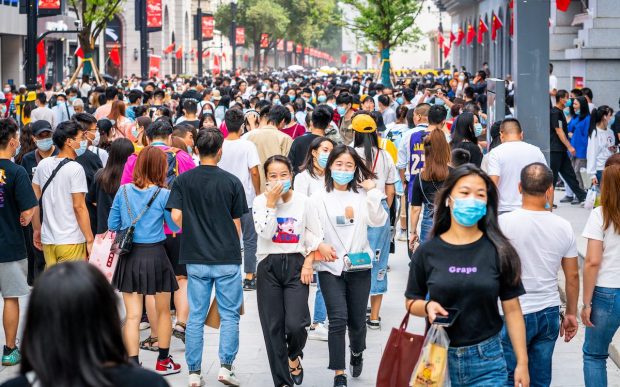Report: Chinese Consumers Are Saving More and Borrowing Less

Consumers in China are reportedly reining in spending and borrowing less due to economic uncertainty.
Chinese consumers borrowed the equivalent of $564 billion last year, a more than 50% drop from 2021 and the lowest level in eight years, The Wall Street Journal (WSJ) reported Wednesday (Feb. 8), citing government data.
The decline was largely due to dwindling home sales and a corresponding drop in demand for new mortgages. In addition, day-to-day consumer spending was down due to pandemic lockdowns, meaning there was less demand for short-term borrowing.
Instead, consumers held onto cash, with new household deposits hitting a record high of more than $2.6 trillion last year.
The report noted that China’s reopening has boosted retail sales and travel. Last month, LVMH Chairman and CEO Bernard Arnault projected that China’s reopening could be a boon for the luxury industry.
“We have every reason to be confident — indeed optimistic — on the Chinese market,” Arnault said during an earnings webcast. “In Macau, where the Chinese can now travel to, the change is quite spectacular. The stores are full and it’s really come back at a very strong pace.”
However, while consumers may be spending on luxury items, the WSJ report noted that big-ticket spending on things like property hasn’t yet recovered as consumers express caution about the future.
“Confidence has plummeted in the past year,” Zhiwu Chen, chair professor of finance at the University of Hong Kong, said, per the report. “When people are uncertain about the future, their first reaction is to save money.”
The situation in China mirrors what happened in the U.S. during the pandemic, when Americans banked about $1.7 trillion in savings, thanks in part to government intervention. Lately, however, those savings seem to be drying up, as PYMNTS research has found.
At the close of last year, research by PYMNTS and LendingClub found that 12% of American consumers spent more than they earned in the six months leading up to October.
A closer look at those figures showed the ability to make up for that shortfall has become increasingly hard to realize, as people who live paycheck to paycheck are half as likely to be stable savers.
These consumers are also seven times more likely to have neither savings nor saving capacity compared to those not living paycheck to paycheck.
The research also showed that there are external factors making it difficult to build up savings, with roughly 65% of paycheck-to-paycheck consumers having experienced a financially stressful event in the last three years.
